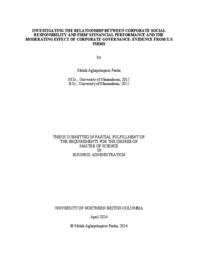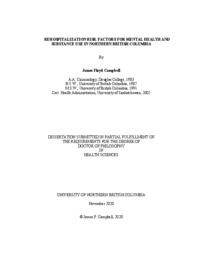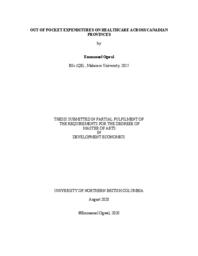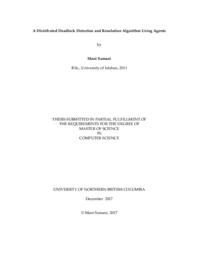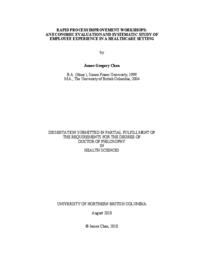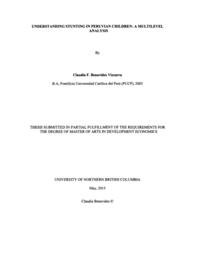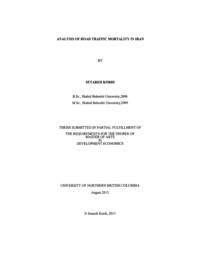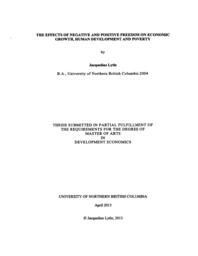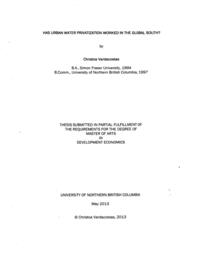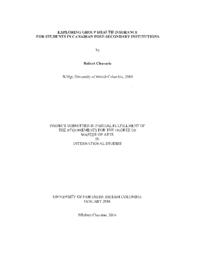Boroojeny, Jalil Safaei
Person Preferred Name
Jalil Safaei Boroojeny
Related Works
Content type
Digital Document
Description / Synopsis
Many studies have examined the relationship between corporate social responsibility (CSR) and a firm’s financial performance. These investigations have had mixed results. Some studies find a positive relationship, others find a negative relationship, and yet some studies find no significant relationship. This ambiguity highlights the complexity of the relationship between CSR initiatives and firm performance. The present study attempts to better understand this relationship. As such, it has two objectives. Since most of the previous studies have examined a linear relationship between CSR and a company's financial performance, the first objective of this study is to investigate whether there is any nonlinear relationship between CSR and firm’s financial performance. The second objective of this study is to examine the moderating effects of corporate governance factors, especially the board of directors’ characteristics such as board size, board independence, board gender diversity, and CEO duality on the relationship between CSR and a firm’s financial performance. The latter factors have not been fully considered in previous studies as the focus has been on the direct link between CSR and the firm’s financial performance. The study uses panel data from a sample of 82 firms from a large group of publicly traded American firms, which are listed on the U.S. stock exchange and are part of the S&P 500 index covering the years 2012-2021, and a nonlinear panel regression model to estimate the relationship between firm’s financial performance as measured by Return on Asset (ROA) and CSR disclosure index along with a control variable and four Corporate Governance indicators and their interactions with CSR disclosure index. The study finds a non-linear positive relationship between firm’s performance and CSR, suggesting a declining effect of CSR on firm’s performance at higher levels of CSR. It also finds that board gender diversity positively affects the relationship between CSR and a firm’s financial performance. We find no statistically significant interactions between CSR and the Governance indicators of board size, board independence and CEO duality.
Origin Information
Content type
Digital Document
Description / Synopsis
Mental health and substance use (MH&SU) rehospitalization rates are used as indicators of treatment quality, to reduce costs, and measure efficacy. Research on this topic in rural Canadian hospitals and communities is lacking. This study used secondary data on 5159 patients (age 15 and older) hospitalized with International Classification of Disease (ICD) F code MH&SU diagnosis. These patients had 9103 admissions to 18 hospitals in Northern British Columbia during a five-year period, April 1st, 2010 through March 31st, 2015. ANOVA and Tukey Post Hoc tests were used to examine associations of two performance measures with five patient factors; community size, Indigenous culture, relationship status, employment status, and ICD F code diagnoses. The first measure was number of hospital readmissions. Of the 5159 patients with 9103 admissions, 3482 (67.6%) had one hospital admission during the five-year period. The remaining 1677 (32.4%) patients had 3944 (43.3%) of the hospitalizations). Patients whose cultural identity was Indigenous had over-representation and increased readmissions. Patients who were single and never in a relationship had increased hospitalizations. Patients whose ICD F coding for schizophrenia or psychosis had increased hospitalizations. The second measure was wait time for community MH&SU follow-up. Of the 5159 patients, 4512 (87.5%) had contact with community MH&SU during the five-years. Urban communities with specialized MH&SU services had reduced wait times for follow up. Patients whose cultural identity was Indigenous had longer wait times for community MH&SU follow-up. Patients who were divorced or separated had longer wait times. Patients with ICD F coding for schizophrenia or psychosis had shorter wait times for follow-up. The relationship between hospital readmission and community MH&SU follow-up was examined using logistic regression with the five factors. An inverse relationship was found between the two performance measures. Patients who did not have community MH&SU follow-up within 30 days had reduced odds ratio of readmissions, whereas patients who had follow-up within 30 days had increased odds ratio for readmissions. Although the study finds support for patient risk factors, evidence suggests approaches like a Decision Support Tool (DST) might provide reliability for intervention, and resource planning, as well as timely intervention.
Origin Information
Content type
Digital Document
Description / Synopsis
Out of pocket (OOP) healthcare expenditures can be burdening for persons of low socioeconomic status. Little is known about socioeconomic, demographic, and health disparity in OOP healthcare expenditures in Canada. This thesis examines the trends of OOP healthcare expenditures during the 2004-2015 period in Canadian provinces using microdata files from the Canadian Research Data Center through the University of Northern British Columbia, and describes the association of OOP healthcare expenditures with various socioeconomic, demographic, and pre-existing health factors. It also estimates the contribution of these factors to the share of OOP healthcare expenditures to incomes. Regression results reveal that the share of OOP healthcare expenditures to incomes are negatively related to income, but positively related to old age, being married, larger household sizes, and pre-existing health conditions. Also, OOP healthcare expenditures are generally higher for female Canadians, and for persons residing in the provinces of Quebec, Alberta and New Brunswick.
Origin Information
Content type
Digital Document
Origin Information
Content type
Digital Document
Origin Information
Content type
Digital Document
Origin Information
Content type
Digital Document
Origin Information
Content type
Digital Document
Origin Information
Content type
Digital Document
Origin Information

